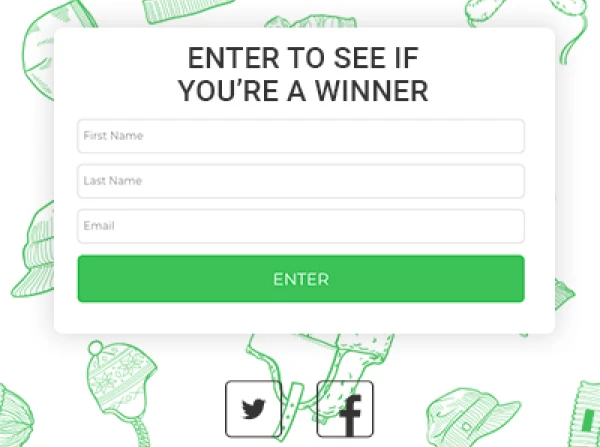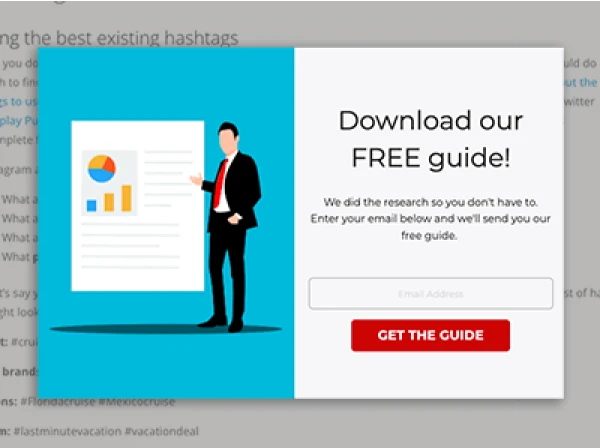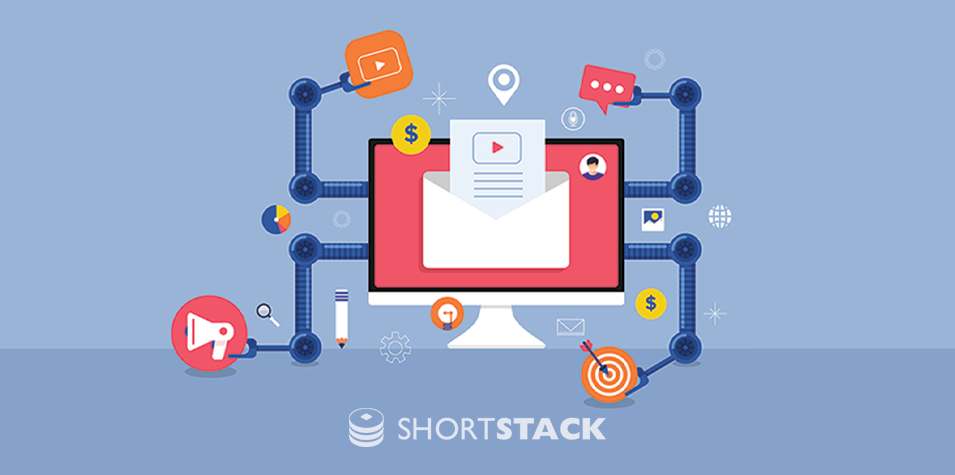By 2023, it’s estimated that over half of the world’s population will use email.That’s why as social networks come and go with the trends of society, email marketing holds strong.In fact, email is 40 times more effective at acquiring new customers than Facebook or Twitter, according to McKinsey research.With email marketing, you are building an asset that won’t get taken away with the change of an algorithm. The same can’t be said for your social media followers.However, even if you appreciate the importance of email marketing, it’s an area that is constantly evolving, and the line between right and wrong is blurred.So what makes for effective email marketing in 2021? What’s changed, and how can you adapt?This article takes a look at six key areas where email marketing has evolved.
#1. Personalization
The concept of marketing personalization is hardly new. Marketers have been harping on about it for years.In saying that, it’s a space that has grown legs as personalization technology has reached more businesses.Whichever way you look at email marketing, personalization is one of the fundamentals for success in 2021 and beyond. It’s no longer a nice-to-have but an expectation.Research conducted by Experian discovered that personalized emails generate six times higher transaction rates than non-personalized emails.It’s also estimated that a whopping 35% of Amazon sales come from product recommendations - that’s right, personalization delivers over a third of revenue for the biggest online retailer in the world.What does email personalization look like in practice? Here are a few examples:
- Collecting the right information about your contacts so that you can personalize the experience they have with your brand.
- Segmenting your contact list so that the emails you send are relevant based on interests, stage of the buyer’s journey, engagement levels, and more.
- Using technology to create a dynamic and highly personalized experience for every customer, including product recommendations, geo-targeted emails, and personalized web pages.
The email below from Honey is the perfect example of personalization. Using a customer’s wishlist information combined with sales data, they can recommend a product that is guaranteed to interest the recipient:

An example of email personalization
#2. Design
In the last 12 months, there has been a notable shift in the way emails are designed. Brands are no longer masquerading as person-to-person messages but instead embracing emails as an extension of their brand.Email design in 2021 has taken on a “Newsletter” style, with a splash of minimalism, bold colors, and multi-device optimization. Rather than a basic, text-based way of communicating, emails now capture the essence of a brand’s website, a brochure, or in-store experience.The myth about keeping emails short and sharp has also been debunked by brands, including extensive information, interactive experiences, and multiple calls-to-action throughout an email. It’s all about engagement and keeping your attention for longer.Emails in 2021 are more like a landing page than a text-based way of communicating. In fact, it’s more about the visual attraction, colors, and imagery than it is the text. Just like this example from Zumba:

Email design in 2021
#3. Entertainment
The design trends above go hand-in-hand with a desire to entertain email recipients. Email marketing isn’t just about exchanging information and enticing a click anymore; it’s about entertaining your customers and extending the brand experience.Interactive elements in emails such as games, contests, surveys, polls, animated buttons, product carousels, GIFs, and videos are trending in 2021.This email from BBC, for example, includes an interactive accordion menu for recipients to learn more about the topics discussed in one of its documentaries:

Interactive elements in emails
#4. Privacy
Since GDPR came into effect in Europe, data privacy has been high on the priority list of individuals and brands all over the world. Of course, to engage in email marketing means that you are collecting personal data from people and need to be mindful of their preferences.As a general rule of thumb, your data protection policy should be up-front and easily accessible for contacts. You should also provide choices for the emails your contacts receive, which helps with personalization anyway and make unsubscribing easy and pain-free.Keeping up-to-date with data privacy laws in your country and informing customers of changes to your policy are non-negotiables in 2021. Here’s an example of an email from Google Domains informing its recipients of policy changes:

An email to announce policy changes
#5. Artificial Intelligence (AI)
Artificial Intelligence (AI) is more than just a buzzword in 2021. AI tools are now prevalent in the market and accessible to brands of all shapes and sizes.AI can automatically write, test, trigger, and analyze your email marketing activity. It’s a key reason why personalization has stepped up its game.An example of an AI tool that is revolutionizing email marketing is Anyword. Anyword is AI copywriting software that automatically generates email subject lines at scale based on inputs from millions of successful campaigns. It enables you to test, iterate, and optimize the performance of your email campaigns without the heavy lifting.

AI copywriting software
#6. Omnichannel
An email marketing trend that often gets overlooked is its congruence with other channels - specifically SMS marketing. A popular strategy for brands is to deliver a personalized message to customers or prospects across multiple channels at once. For example, you may receive an email about a coupon code or upcoming sale, that is replicated via SMS, too.The attraction to SMS marketing is due to its engagement rate. 97% of text messages are read within 15 minutes of being sent. Not only do you have an increased chance of message deliverability by using this channel, it also creates a compounding effect by reinforcing your message (and brand).You could expand this omnichannel approach with social media messaging, retargeting ads, and other ways of following up to get the best results.For example, BoozeBud promotes timebound sales with both SMS and emails in unison.The SMS:

SMS promotionAnd the Email:

Email promotion
Conclusion
Despite the interest in new and shiny social networks, email marketing is still one of the most effective channels at a marketer’s disposal - and it’s showing no signs of slowing down.In saying that, the email marketing ecosystem is always changing and evolving. If you rely on outdated tactics such as send-all email blasts and desktop-only campaigns, you won’t get the return on investment you’re after.As automation and AI technology improve, the expectation for brands to deliver a personalized email experience will grow. Lean in and enjoy the ride, so you're not left behind.Get started on your next email marking campaign with ShortStack.
About the author
Will Blunt is the founder of Sidekick Digital by Will Blunt - B2B Marketing Expert - Sidekick Digital, a publishing business that launches, manages, and grows brands with content marketing.
Recent posts
Go back to blogGet marketing tips straight to your inbox
Launch an irresistible giveaway. Get started for free.
Join 630.000+ marketers that are boosting engagement and sales.













